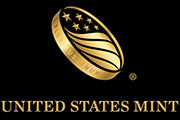Teacher Feature
Minting a New Mint
Background
Prior to the drafting of the U.S. Constitution, currency was a confusing issue in the colonies. Up until this point, people had used everything from wampum to individual state coins to acquire goods. There was no solitary form of money being used throughout the land.
When the Second Continental Congress met and developed the Constitution of the United States, it was meant to be a framework for their new nation. Within the original plans, the framers of the Constitution realized the need for a single monetary system, and wrote that "The Congress shall have the Power...to coin money, regulate the value thereof, and of foreign coin, and fix the standard of weights and measures." (Constitution of the United States, Article I, Section 8)
Activity
With your class explore why our Founding Fathers felt it was necessary to have uniform system of money. As a first part to the lesson, have your students develop a currency system of their own. To do this, supply your students with a worksheet divided into two columns. The first column should have pictures of the main pieces of U.S. currency, and the second column should be blank in order for your students to add the drawings of their own currency. Begin the activity by discussing the dollar as the base of our coin system (i.e. quarters, dimes, nickels, and pennies are parts of the U.S. dollar). Have the students decide on a base for their system of money that can be broken into parts (some ideas might be to draw a whole pizza, an ice cream cone with many scoops, or even a rainbow). Then have them illustrate the rest of their "currency" in the empty boxes labeled "My Money." Monitor your students progress as they are completing this activity, and note what types of currency your students are creating.
After your students have created their money systems, tell them that you are going to be holding a class sale. Explain that for this sale a student is only able to purchase an item if he or she has the type of currency that you, the salesman, decide on. Display a prize that is extremely eye-catching, and that many students would want. Tell the students that only students with a particular type of currency (one that you know very few students have developed) could think about buying that item. After sounds of disgust ensue, ask the students why they don't sound happy. This will stimulate conversation and allow you to explain to your students that this is what the U.S. was like before there was a single system of money. Have the students develop a list of reasons why it is important to have a single system of money. Or instead, have your students debate the merits of multiple money systems, versus a single system.
Extension
- Discuss Europe's movement towards a single monetary system (the Euro).
- Develop Math activities involving conversion from one country's money to another.
- Create Social Studies activities revolving around the other liberties granted by the U.S. Constitution.
| U.S. Currency | My Money |
|---|---|
 $1.00 |
|
 $0.50 |
|
 $0.25 |
|
 $0.10 |
|
 $0.05 |
|
 $0.01 |
Standards
The project described above reflects some of the national standards of learning as defined by the National Council for the Social Studies (NCSS), the National Council for Teachers of English (NCTE), and the International Society for Technology in Education. These standards are listed below:
Social Studies Standards
Time, Continuity, & Change: Students will develop empathy for the founding fathers and their desire to develop a single, national Mint.
Individuals, Groups & Institutions Students will examine the roles of the individuals who developed the idea for the United States Mint, and why this change was necessary. They will also examine how this change was developed to help further the progress of the new nation.
Back to Related Content
|
Teacher Feature Stockroom
More About Teacher Features




